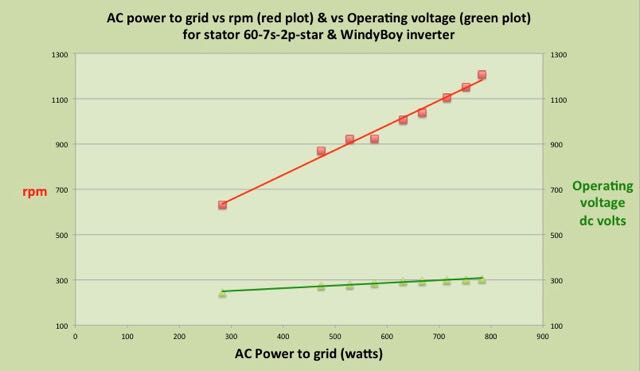Much useful discussion resulted from those posts, only some of it in the comments section after them. I'm still working to understand it all and perhaps will post about it if I can get my newly found understanding into an intelligible form. The comment which encouraged me most (which was not published), came from someone who really understands motors and generators when he said, after giving as lucid an account as anyone could give: "I hope this makes some sense, there are few explanations that make any reasonable attempt to explain what is really happening in an alternator as you load it", - my thoughts entirely.
So the light weight matters are:
1. Generation so far this year.
It has been extraordinarily wet here in Wales, (UK) and the Powerspout has had an uninterrupted spell at full power since 1st Dec. This, together with it generating 30 watts more for the same flow than in previous years, has seen the record of energy generated outstrip previous years; long may it continue!
2. Confirmation of temperature effect on generation.
Early in January we had a brief period of cold weather. Night time temperature dropped to below freezing for a few nights making the temperature inside the SmartDrive housing 19.4 deg C. Compared to the normal operating temperature of about 26-29 deg C, it was thus some 7 to 10 degrees cooler than usual. As the records of power output below show, power increased by 15 watts when it was colder, confirming my earlier observation.
Both these records were with a de-finned rotor. The aim of de-finning was to reduce energy lost to the extra work of revolving a finned rotor. But de-finning necessarily reduces ventilation and thereby raises temperature. Since raising the temperature clearly reduces power, it has to be wondered whether de-finning gains anything at all. When I looked at this a while back, the gain from de-finning was only 1 to 2 watts but no consideration was given in that study to holding temperature constant.
So there's another research project in the making !
So there's another research project in the making !


